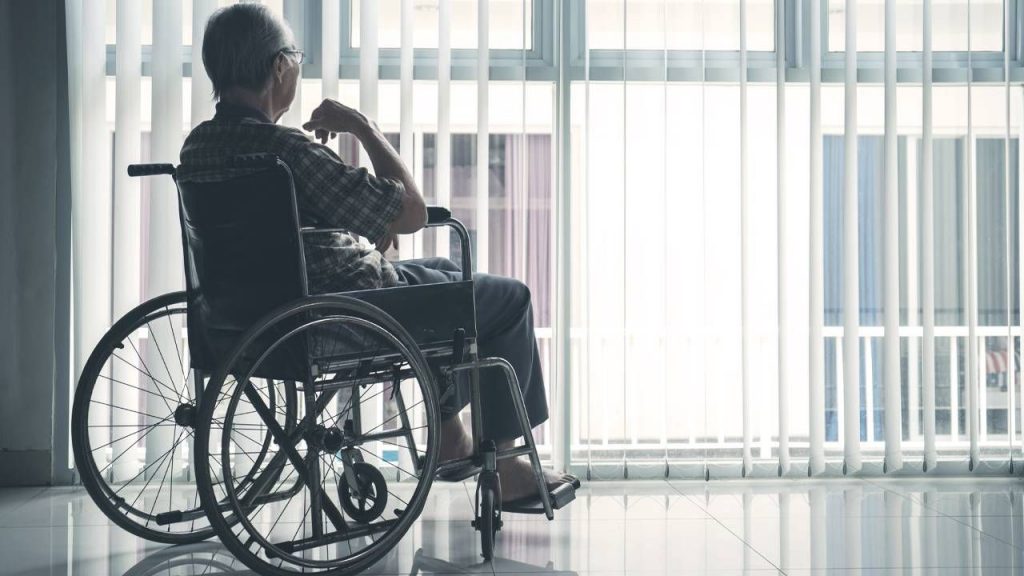The Story of My Grandfather’s Death
Prior to my grandfather’s death, he was generally healthy. Actually, even four weeks prior to his death he was going to casinos and visiting family. He had a known history of atrial fibrillation taking a blood thinner, hypertension, and high cholesterol. He had a primary care doctor and a cardiologist that were both following his care. He had been feeling somewhat weak, which led his primary care doctor to stop one of the medications that regulated his blood pressure and heart rate. Stopping this medication was not necessarily a “wrong decision,” but in a 90 year old patient, stopping a medication abruptly should be coupled with close monitoring. In his case, it was not. For weeks he only had cursory telehealth visits.
As time went on, his heart rate and blood pressure both slowly became more uncontrolled. As things became worse, he was unable to walk lengths that he had in the past, and began falling. It was not until I spoke with him over Father’s Day and heard fluid congestion in his lungs through his speech, that he was sent to the hospital for suspected new onset heart failure, a condition in which the heart is not pumping as well as it should, versus flash pulmonary edema, a condition in which fluid rapidly floods into the lungs, causing difficulty breathing. After arriving and being assessed in the hospital, it was clear there were likely components of both affecting his health, but likely a stronger component of flash pulmonary edema. He was treated with the appropriate medications and improved in turn.
Surprisingly, my grandfather survived this hospitalization and was eventually discharged from the hospital. He was upgraded to a more intensive nursing home facility, where he would be on a floor with round the clock nursing and his own bedroom. Over the next few days since his hospital discharge, he was recovering, playing cards, and able to FaceTime with family. Unfortunately, the stress of the previous hospitalization left him with intermittent periods of confusion, decreased strength, and poor balance. He was receiving physical therapy and other supportive measures to hopefully build his strength back, though this was ultimately insufficient.
Though my grandfather was in a higher level of nursing care, in the span of three days he fell two to three times. The family raised concerns around the falls, suggesting that he should possibly be sent to a facility with a higher level of care, but we were reassured and told not to worry. Despite having already had a few falls and my family raising concerns about them, one day he was left alone standing outside his room. He fell again, but this time straight backwards, slamming the back of his head on the ground. He was rushed to the hospital and found to have serious brain bleeds, a skull fracture, unstable spinal fractures, and fluid levels rapidly increasing in his lungs. After consulting with his medical team, our family decided to transfer him to hospice, as he did not have much time left to live. Shortly after reaching hospice, he passed away. A man who was placed in a “higher level of care” to recover and improve from a previous near-death episode was dead in less than a week.
Primary Care Under Capitalism
As a primary care physician myself, I find it important to start my analysis at my grandfather’s primary care. This initial hospitalization clearly could have been avoided, had he gotten the care he needed when his medication was changed. Unfortunately, as is typical of primary care in the United States, there was not enough follow-up to appropriately assess my grandfather’s conditions and catch the worsening condition of his heart and blood pressure early-on. This is likely not secondary to his primary care doctor purposely wanting to cause harm or even ignoring his care, but instead a result of the way factory-like medical systems within most of the United States operate. Primary care physicians in the United States often have extremely large patient caseloads. The clinics they operate out of often function as factories to facilitate the extraction of monetary value from patients’ bodies. The larger a physician’s caseload is, the higher the potential to generate profit. Unfortunately, this means a decreased likelihood that each patient receives the close care they need. This can and often does result in lapses in care. There is an even higher likelihood of elderly patients being harmed by this dynamic, as they can often have complex medical histories, including large numbers of medications that, if taken incorrectly, can have negative side effects.
Today, the capitalist economic model consolidates healthcare distribution into large, factory-like corporate centers of care where patients are just another number. In these centers “health delivery” is seen as a “product.” Institutions push for greater and greater “efficiency” in the hopes of maximizing profits. While individual healthcare workers very likely care about giving the best care possible to each patient, this is not the goal of the health systems that they work under. Despite the flowery language about health equity and individualized care, the primary goal of each of these large institutions is to funnel as many patients in and out as possible. Yet, the more complex a patient’s medical history, the more time is necessary to adequately provide comprehensive healthcare to that patient. Elderly patients specifically have a higher likelihood of having complex medical histories, as our health deteriorates as we age. In a healthcare system controlled by the capitalist economic model, as the bottom line is maximized at every point, the quality of care is minimized. This is even more true for the elderly.
From Factory Primary Care to Warehouses for the Elderly (aka Nursing Homes)
Why wasn’t my grandfather placed in a higher level of care after falling multiple times? Why weren’t there enough staff to watch him to make sure he did not fall? To answer these questions, we must look further into the state of institutionalized care for the elderly in the U.S. There are close to thirty thousand elderly care facilities in the U.S. today. These facilities can be designated as both nonprofit and for profit institutions. Today around 70 percent of these facilities are for profit institutions. While the data shows nonprofit institutions have better patient outcomes, as is typical under capitalism, nonprofits still often have many of the same issues around cutting costs at expense of patient well being. Regardless, even in the best care centers, elderly care centers, just like other components of the U.S. healthcare system, focus on extracting profit from the elderly. These centers prioritize generating money as opposed to actually providing care. The elderly “care” facilities that have developed are perfect environments to warehouse the elderly, and also create an environment for continuing to extract monetary value from elderly bodies. With over 70 million baby boomers today and around 10,000 seniors turning 65 each day, the number of elderly people requiring healthcare will only grow, which means that for capitalists, this business model of warehousing the elderly must expand in turn.
In these settings, workers are often paid poor wages, are rarely unionized, and have to work long hours doing very difficult work. Owners of these facilities frequently duck labor laws. Employers can break overtime, record keeping, and minimum wage laws. In the neverending effort to generate greater returns, owners can attempt to cut staffing as much as possible. In these centers, there are no federal requirements on staffing ratios. As one study found, “more than half of U.S. nursing homes were found to have lower RN, CNA, and total nurse staffing levels than those recommended by experts.” Many states attempt to set their own standards around staffing, but these are often not up to the recommendations set by experts. All of this means poorer care for patients, in addition to oppressive and damaging working conditions for healthcare workers. Many healthcare workers have been organizing against these conditions, many have even gone on strike.
Despite the best intentions of the healthcare workers in the facility, my grandfather, like many, was not being observed when he fell. My grandfather was in what the state deemed “one of the best” facilities possible for care, yet, the profit motive under capitalism required poor staffing practices that led to conditions that contributed to my grandfather’s fall and avoidable death. As my grandfather had funds to pay out of pocket, the conditions he lived under were better than those of many in nursing homes. As a physician, I cannot count the number of times while working in the hospitals in New York City that I saw the negative impacts of isolating and shoving aside elders into these warehouses. Often, people would be brought into our hospital with their bodies actively decaying. People expect their loved ones in elderly care facilities to receive the “best care possible,” but, the “best” care “possible” under profit-driven healthcare systems under capitalism is abysmal.
Care Under Capitalism Harms the Elderly and Their Caregivers
My grandfather obtaining care inside an assisted living facility put him in the minority of most elders in the United States. With only 4.5 percent living in nursing homes and 2 percent living in assisted living facilities, a majority of the elderly live in the community alone or with family. This makes sense, as data shows that a majority, around 88 percent of the elderly today, would prefer to receive the assistance they need as they age either at home or with family members. Families and friends often step in to help caring for an individual as they age, with 65 percent of older adults who have long term care needs obtaining assistance from family or friends. According to a report from the AARP and the National Alliance for Caregiving (NAC) called Caregiving in the U.S. 2020, “most caregivers of adults care for a relative (89 percent), typically a parent or parent-in-law (50 percent).” While this data showing the solidarity of the working class in trying to bridge gaps in care is heartening, the fragmented nature of long-term care services and the health care system in general in the U.S. can have negative consequences for not only the elderly individual, but also for the caregiver.
As briefly discussed in the example of my grandfather, as we age, we often develop more complex medical issues which require close follow-up. However, the disjointed nature of the healthcare system makes close follow-up of medical and social issues more difficult. This can often lead to lapses in medical care or medical errors — like in my grandfather’s case — which ultimately can harm patients’ health. The factory-like medical system makes it infinitely harder for elderly patients, caregiver family members and friends, and healthcare workers to spend the time needed to adequately evaluate, coordinate, and care for elderly individuals.
This fragmented system does not just hurt the elderly, but also the caregivers experiencing physical, financial, and emotional strain. As data from Caregiving in the U.S. 2020 shows, close to 25 percent of caregivers find it difficult to take care of their own health, and around 25 percent report that caregiving has made their own health worse. Caring for an elderly loved one can also lead to financial strain. Again as per Caregiving in the U.S. 2020, “three in ten have stopped saving (28 percent) and one in four have taken on more debt (23 percent).” This leads to caregivers’ savings being eroded, with 22 percent of respondents using up personal short-term savings and 12 percent using long-term savings (for things like retirement or education) to finance caregiving.
Sometimes the care given by family members is not enough, and often an elderly individual may need additional assistance while at home, which means the family may try to hire an at-home health aid for additional assistance. Often these healthcare workers are employed through various agencies to deliver this crucial care to elderly individuals. Unfortunately, these agencies push healthcare workers into abysmal working conditions and offer paltry wages. In New York City for example, the laws actually allow for the exploitation of these healthcare workers. This leads to healthcare workers that are overworked and underpaid, which can negatively affect the mental and physical well being of the healthcare workers and translate to the quality of care given to the elderly patient.
Even if an elderly patient or family wants to look for extra assistance, insurance plans often do not pay for the adequate amount of time the elderly individual may need assistance for. This leads to the elderly individual and/or the family needing to spend savings and potentially liquidate assets to fund home care. This can result in the breakdown of working class families’ ability to build intergenerational wealth. Alternatively, this is no problem for the rich and the ruling class. They can pay for their own home care and still pass money and/or assets on to their children. This dynamic not only harms health, but exacerbates the wealth gap between the working class and ruling class.
We live in a society where capitalists continue to rake in excessive amounts of wealth, leading them to waste money on trying to get themselves to space and where greater tax dollars under both corporate-ruled parties go toward expanding U.S. imperialism. Meanwhile, families are losing their savings to simply provide care essential for a loved one’s survival. Capitalists spread myths of scarcity to justify the current functioning of broken systems of care, but this is just a smokescreen. To be clear, this system continues in its current structure because it is profitable for the capitalists who lead the major industries of the medical industrial complex, not because there is a lack of resources or because there are no alternative options. A free, universal healthcare system — especially one under worker control — would simplify health delivery and benefit everyone instead of the health of the elderly and of caregivers being sacrificed for the maintenance of systems which benefit the rich.
Covid-19 as a Magnifier
Finally, one of the most glaring examples in recent history of how capitalism views the disposability of the elderly is the intersection of the Covid-19 pandemic and elderly care. As was noted early on in the pandemic, a disportionate number of deaths occurred in long term care facilities, but it was not only long term care facilities where elderly individuals were being killed by Covid-19. Policies to protect capitalist profits hurt the elderly throughout our society. The government refused to shut down the economy, while also refusing to freeze expenses such as rent payments, mortgages, utility bills, as this would hurt the ruling class. As Left Voice has covered, this forced the working class and essential workers to continue to put themselves and their own health at risk to survive. As a majority of the elderly who need additional assistance receive care from loved ones, this also put many individuals with vulnerable health statuses at risk of getting sick and dying from Covid-19. Not only the working class, but also the elderly of our society were sacrificed at the altar of capital.
The rhetoric of capitalist media and ruling class politicians advocating for economies to stay open highlights just how disposable the ruling class views certain sectors of the population to be. The rhetoric saying that “this is not a big deal, just old people and disabled people will die, if you are generally healthy, you should be ok,” reflects how eugenicist capitalism truly is. Covid-19 helped to illuminate how the ruling class have always viewed the elderly and disabled.
Under Capitalism All Life is Disposable, We Must Fight for Revolutionary Socialism
Under capitalism, all human life is disposable. The extent to which is based on an individual’s ability to produce surplus value. The elderly in particular are more expendable, as they are no longer able to produce surplus value. Frankly, similar arguments made in this piece could have been made around long term care given to disabled individuals under capitalism. The U.S. healthcare system itself cannot be separated from the capitalist economic system in which it functions. This means, as seen in the case of my grandfather’s death, the U.S. healthcare system must function by abiding by the same basic tenants of capitalism that other industries abide by. What makes the healthcare system’s dynamic unique is its claims to prioritize the health and well being of patients. This rhetoric only serves as a veil to cover the capitalist rot central to U.S. healthcare. This rot, fundamental to capitalist economy, touches all sectors of the healthcare system. There are no exceptions for the typically termed “vulnerable” populations such as children, the disabled, or the elderly. All life under capitalism is disposable.
Though my grandfather has now transitioned from this life, his death, and the unjust death of every elderly individual at the hands of capitalism, all reinforce the need for elder care to be organized and run by families, the elderly, and healthcare workers. There must be increasing funding and training for those caring for the elderly at home, along with higher pay and drastic improvements in working conditions for healthcare workers caring for the elderly. We must move away from a healthcare model that functions for the profit of capitalists to a system of public healthcare by and for the working class. Ultimately though, the state of one’s health is determined by systems far beyond healthcare. These systems all function according to the essential tenets of the capitalist economic model, which see all life on earth as commodities to be exploited. They intertwine and stretch beyond the borders of any one nation. This means, for the health of all living things on our planet, we need to fight for revolutionary socialism on an international scale. This is the only way we can put health and well being at the forefront.











